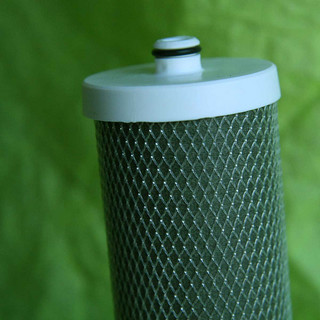Survival Water Filters
Using survival water filters for safe drinking water is critical for survival in any disastrous situation as water is the most basic element of all human needs, and without it, we cannot live. The increased number of books, news reports, and TV shows concerning survival preparedness points to the importance of getting ready in the event of a catastrophic incident, which might include contamination of our water supply.

Photo courtesy of Ivy Dawned
Whether you are a prepper, survivalist, or you are simply going on a camping or hiking excursion, you need the basic equipment and survival skills to meet the challenges of the rustic living.
Three basic methods of filtering water are ceramic filters, glass fiber filters and hard block carbon filters. Your choice of filter depends on your budget, on the specific purpose such as long-term or short-term use for the filter and your taste in water.
Ceramic Filters
The best of all survival water filters is the ceramic filtering system. The size of the pores on ceramic filters typically ranges from 0.1 to 0.5 microns. This simply means that this filter is effective against protozoa and bacteria, including cryptosporidium and giardia. Some of the elements offered have silver incorporated into the ceramic in order to keep bacteria from growing in the pores. Ceramic elements will be the most expensive of filters, but you will find that it is the best quality.
Ceramic filters are the same elements used by the Red Cross, FBI, the World Health Organization (WHO), and other international companies, supporting the notion that it is a safe and effective way to ensure your water becomes the portable water that you need. The downside to these filters is that even though they remove the particulates in the water, it does not improve the taste or bad odors in the water, nor does it remove any chemicals or pollutants.
Glass Fiber Filters
The second type of survival water filters is the glass fiber element. The pores on glass fiber filters range from 0.2 to 1.0 microns. If you are planning to use a filter for short-term needs such as an outdoors vacation or simply using it around your home this is a great filter to use. These filters are the ones a group of scouts might use on a hiking expedition, for you to take on fishing trips or for any emergency survival situation.
Filter straws; water bottles, ones you can fit in a fanny pack and others you can just stick in your pocket use glass fiber filters. The downside to the glass fiber elements is that they clog and are difficult to clean, so you cannot store them for long periods due to the possibility of mold or mildew growing in them. Additionally, like ceramic, glass fiber does not improve odor or taste, nor does it remove chemicals. They are moderately expensive, but like ceramic elements, their effectiveness is well documented as they do catch bacteria.
Hard-Block Carbon Filters
Carbon filtering typically should be seen as a second or third level filtering system. While this filtering method is more aesthetic than the two other methods, you cannot discount the quality of these survival water filters. In contrast to ceramic and glass fiber, carbon filters improve the taste of water, remove bad odors, and taste, not to mention pollutants and harsh chemicals. At the same time, it removes some impurities as well.
Keep in mind that filtered water is not only essential for safe drinking, it is necessary for sanitizing, gardening, cooking, rehydrating dried foods, and medical emergencies. It is a crucial step to survival in unusual or life-threatening circumstances or adventures.
Survival water filters are your best chance to make it through a difficult situation with safe and good-tasting water. Typically, the best advice is that you can and should use one or more of these filters in conjunction with other methods of water purification, such as boiling, UV purification, or iodine treatments.
Return from Survival Water Filters to Apocalypse Water





New! Comments
Have your say about what you just read! Leave me a comment in the box below.